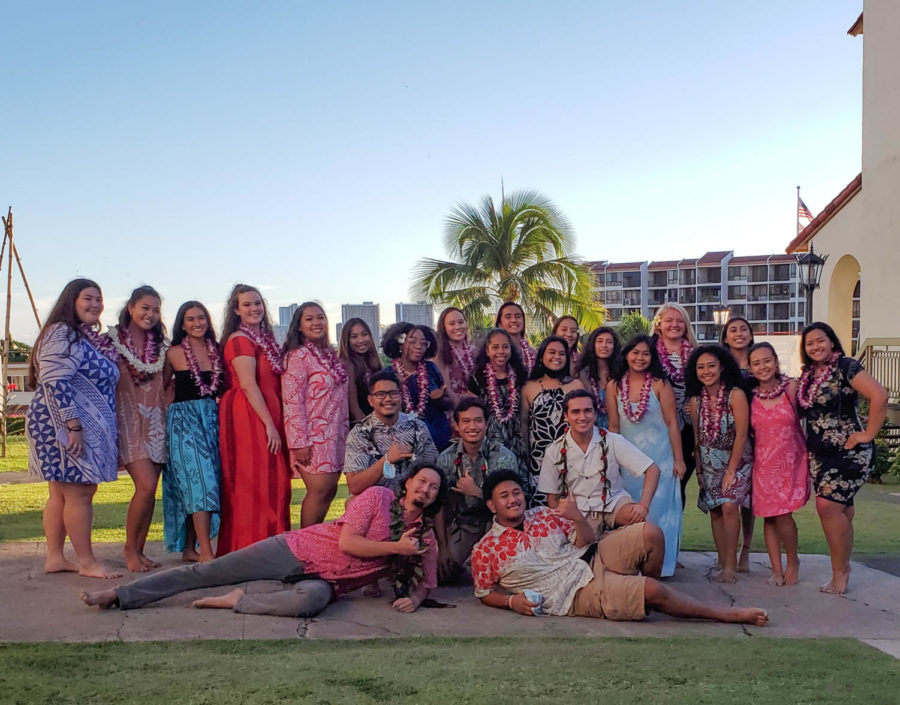PIR Week Ends With a Demonstration of Hawaiian Culture
Ka Ipu Kukui Me Ka ʻie ʻie took a group picture after its final performance of PIR.
As Chaminade’s Pacific Island Review week came to a close, Ka Ipu Kukui Me Ka ʻie ʻie, Chaminade’s Hawaiian club, shared its culture on the Zuberano Lawn through interactive stations and performances.
The club created several stations to teach students different parts of Hawaiian culture. One of the stations included a poi making demonstration by the Hawaiian club advisor Kumu Kahoaliʻi Keahi-Wood. Due to Covid-19 restrictions, students were not allowed to pound the kalo themselves but the club distributed poi made by their advisor at the end of the demonstration to give a taste of their culture.
“I think it [PIR] introduces the student body to enjoy the culture outside of what’s known in Waikīkī as entertainment,” said Keahi-Wood. “So it’s a little bit more background and history and understanding of why we do these things.”
There was also a hula demonstration where students could learn hula basics. Club president Alaina Mercado, a senior Elementary Education major, has been dancing hula for 14 years and helped to choreograph and teach hula to the club. She performed in PIR in previous years and values the event to share her culture with others.
“I feel like it’s definitely a way we can actually showcase our culture,” said Mercado. “A lot of times students at Chaminade or even other colleges are really busy, so some of them might not be able to even join a club to learn and get educated about different cultures. So events like this actually gets them immersed into their culture without having to have to put in that work for it, or having to put in that commitment when they have other commitments outside of school as well.”
In the spirit of Halloween, there was a scary Hawaiian story showcased in the Vi and Paul Loo Student Center about the Lāʻie Lady, a woman who frequents Lāʻie in search of her missing son.
Kara Joves, a senior Forensic Science major who performed in the 2019 in-person PIR, came to support the Hawaiian club. In 2019 PIR was condensed into a single night; however, due to Covid-19, it was developed into a weeklong event. During the week, each club was given a day to showcase its culture.
“This one, you kind of see more of what the culture is like, versus before, when it was just all performances, it was mainly like you see the dance, you see what their culture kind of looks like, but this one goes more in-depth than before,” said Joves.
The night ended with a performance by the club. The club members danced to “Kuʻu Pua i Paoakalani”, a song written by Queen Liliʻuokalani while imprisoned in her palace, and “Hanohano Ka Lei Pīkake” by Kealiʻi Reichel, which describes the pīkake lei.
Tyanna Hemmings, a first-year Forensic Science major from New York, attended PIR for the first time this year. She assisted in teaching hula at one of the cultural stations and performed with the Hawaiian club.
“I would 100 percent recommend it to everybody every year,” said Hemmings. “It’s super amazing, super awesome. I’ve learned so many things. Like [prior to PIR] I never knew about Samoa or Tonga or anything. And the fact that I got to even perform is super cool. I really immersed myself.”
